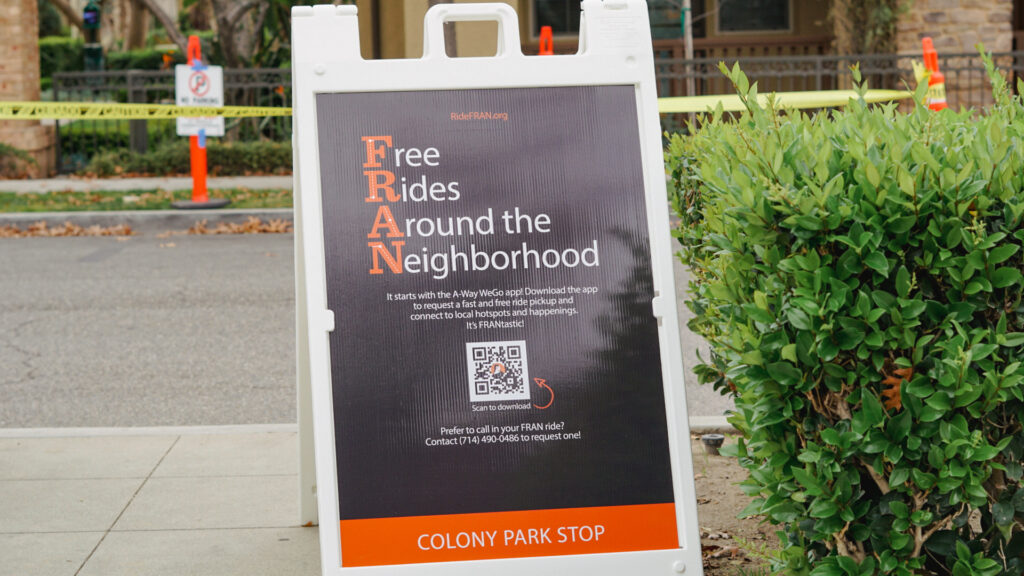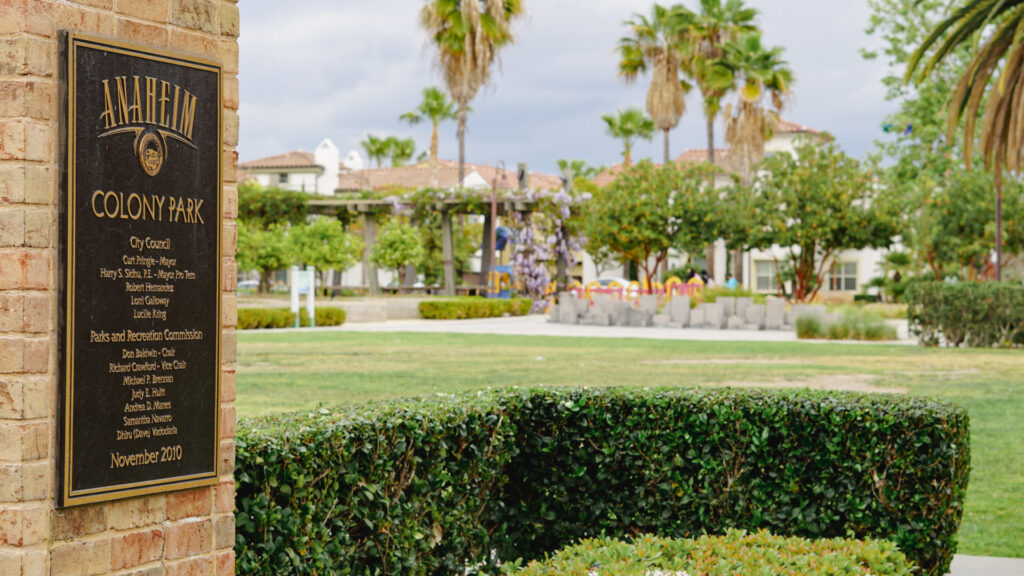Catalyzing Health and Wealth: Rebranding Gentrification
Hector San Martin | March 25, 2022

When discussing the concept of gentrification, there is a polarizing argument around its benefits and costs. As a longtime resident of Anaheim, California, I have seen my community experience many positive changes resulting in what could be considered gentrification. The city has attracted new development and lowered crime through concerted effort. More affluent residents and visitors associated with tourism in the City have added value to the community resulting in greater investment, culture, and diversity of food, services, and shops. This investment has allowed the city to expand services, including Free Rides Around the Neighborhood, known as FRAN, a project funded by local property assessments and grants. Some see these changes as great things representing growth and prosperity that result in a safer and more appealing community. For others it means that outside investors and developers move into poor neighborhoods to profit from higher rents and new businesses that attract affluent residents while driving out low-income residents and small businesses.
The Urban Displacement Project defines gentrification as, “a process of neighborhood change that includes economic change in a historically disinvested neighborhood — by means of real estate investment and new higher-income residents moving in — as well as demographic change — not only in terms of income level, but also in terms of changes in the education level or racial make-up of residents.” By definition, gentrification brings resources and diversity into communities that were previously disinvested and segregated, some even as a result of historical red lining. This brings with it, the potential to alleviate the concentration of poverty.

Displacement and Gentrification are not Correlated
The displacement of existing residents that is attributed to gentrification is often confused with normal neighborhood turnover, and other processes influencing change. Higher rent prices disputed by opponents of gentrification may increase for renters that are choosing to move into more desirable housing and willing to pay for the benefits and changes associated with gentrification, but often not for existing residents staying in place. In a 2005 study, Lance Freeman discovered that displacement and gentrification are not directly correlated. He argues that the changes we see are not due to displacement but to succession, where more affluent residents are drawn into a gentrifying neighborhood but not because of original residents being kicked out. Low-income residents tend to move out of a neighborhood at essentially the same frequency whether the neighborhood was gentrifying or not. Indeed, Kriston Capps writes in Bloomberg City Lab that actual displacement is a constant among low-income families that lack residential stability.
In his 2015 article in The Atlantic, Chris Bodenner quotes Lance Freeman’s response to the issue of gentrification. Freeman, the director of Urban Planning program at Columbia, writes that, “Gentrification brings new amenities and services that benefit not only the newcomers but long-term residents too. Full-service supermarkets that carry fresh produce, restaurants where residents could dine in, and well-maintained parks are often lacking in poor neighborhoods prior to gentrification.” Bodenner also highlights a study by Freeman and Frank Braconi, noting that, “African Americans are actually more likely to remain in gentrifying neighborhoods than stagnant ones.”
Sufficient evidence shows that the benefits of gentrification far outweigh the costs. Gentrifying a neighborhood provides the means of developing higher quality services and amenities to benefit everyone. Shaunacy Ferro, a Brooklynn based writer argues that low-income people and wealthy people want the same thing, “You know, good schools, clean streets, safe neighborhoods. In between the extremes of a poverty-stricken food desert and the bougie condo wonderland lies a middle ground, an economically diverse neighborhood where everyone can benefit from changes.”
Improvement Without Displacement
It is evident that community displacement is amongst the greatest of concerns when referring to gentrification, but what if we could view gentrification as a catalyst for health and wealth for its existing residents? Cities have the ability to actively incorporate thoughtful strategies into their housing plans, to ensure affordable housing for existing residents. They can optimize the creative development of small businesses that will fuel community growth, drive innovation and localize higher paying jobs, in turn offering better community services, and new opportunities for existing residents.
In the case of Anaheim, the Housing Authority offers access to grants and federally-funded programs that are allocated through the Department of Housing and Urban Development (HUD). These programs including The Housing Choice Voucher and Affordable Housing Lists, which offer rental assistance and or secure agreements with property owners to keep rents below market value. In addition, HUD programs offer funding and grants including the Community Development Block Grant, Emergency Solutions Grant, Home Investment Partnerships Program and Housing Opportunity for Persons with AIDS. These programs are geared towards assisting low to moderate income residents, homeless persons, and increasing the supply of affordable housing.
Freeman suggests that to ensure racial, ethnic, and socioeconomic diversity, affordable housing should be accessible to both existing and future residents. Options to achieve this include developing a community-based organization with a defined catchment area. Funding for affordable housing in this area could be allocated through the increase in taxes from property values. Senior property tax exemptions and homestead tax credits can help the elderly on fixed incomes. Homebuyer down payment assistance programs may help renters purchase their own homes. Developing new high-density housing can improve the living conditions of those living in old worn-down apartments, while increasing supply, keeping housing costs lower and vacating land for recreational open space. High density development also attracts new employers and increases tax revenues that can be used to provide better public services, while making it easier and less costly to manage school districts and public infrastructures. Lise Bornstein notes that density also provides access to local services, reduces the ecological footprint and alleviates transportation.

In addition, gentrification can generate wealth for existing property owners and better mental and physical health of residents, many of which may be low-income minorities. Jesse Van Tol argues that in lower-income neighborhoods with high homeownership, gentrification can be a life-changing event for families as it leads to wealth-building, thereby improving their economic mobility. A 2019 Research article by the Federal Reserve Bank of Philadelphia highlights literature showing that children who are exposed to higher income neighborhoods at a young age are more likely to succeed through improved mental and physical health. It also shows that gentrification increases the likelihood of children from less-educated homeowners to attend and complete college and earn higher incomes as adults. The study shows evidence that the visible changes experienced in a gentrifying neighborhood are due to the quantity and composition of incoming residents, not due to displacement.
Rebranding Gentrification
Growth is inevitable with rising population and increased interest in cities. We must be pragmatic in our approach and understand that financial investment is necessary to provide basic services and drive improvement. Freeman’s research has shown that gentrified neighborhoods have diversity in terms of racial and socioeconomic status. If we want to improve our communities and expand the reach of shared spaces and resources, then we must adopt the concept of integration by gentrifying to create multi-cultural and socioeconomically diversified communities.
This does not mean that everyone leaves because wealthier people move in. It means that everyone lives in a closer web rather than living in isolated poor or rich neighborhoods. Discouraging development investments in low-income communities perpetuates the concentration of poverty by diverting investments elsewhere. Driving change through strategic planning and development allows for the fluid integration and gathering of people with diverse income levels and diverse backgrounds, sharing quality services, food options, safety, and economic opportunities. Exposing residents to people of varying economic and cultural backgrounds can create opportunities for sharing knowledge, social, cultural, and professional practices that may influence individuals to live more rewarding lives.

Hector San Martin is a graduate student in the Master of Landscape Architecture program at Cal Poly Pomona and holds a Bachelor’s in Plant Science. He aspires to lead changes in developing cities to be more prosperous and by merging the human and natural environment. He would like to apply scientific principles into design to mitigate environmental pressures while enhancing, restoring, and protecting natural spaces.